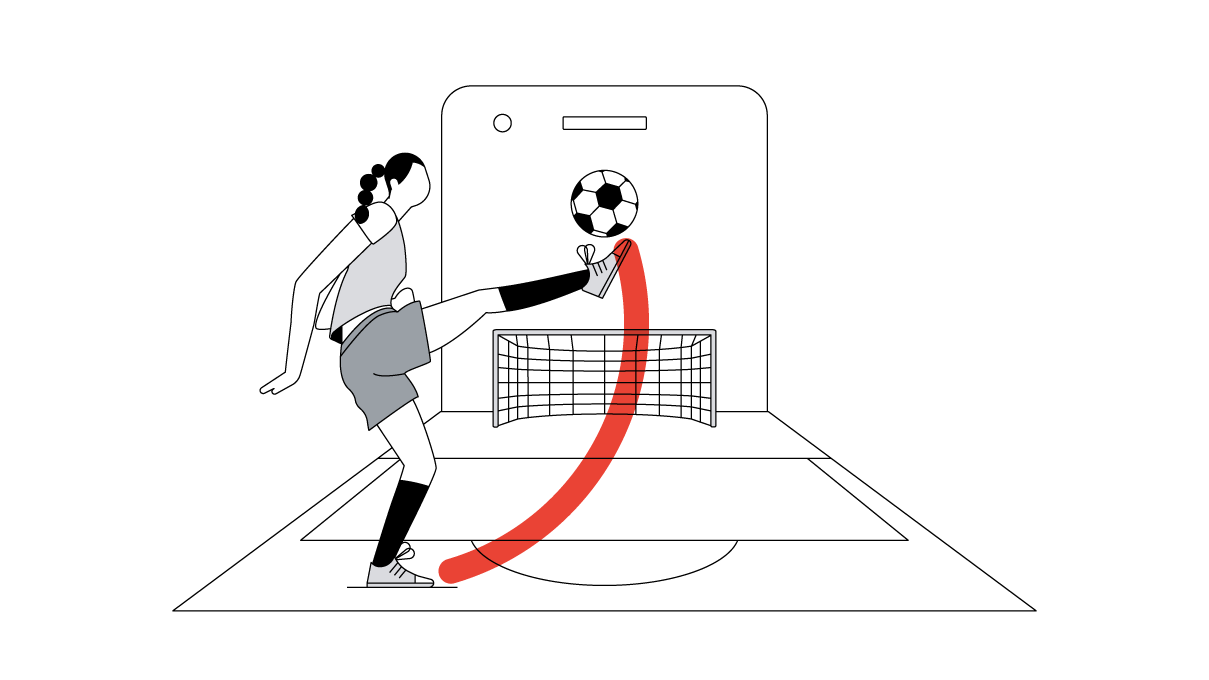Many Kenyan youths have a sports betting addiction. A study found that 57% of Kenyans over the age of 18 have gambled, and gambling is particularly prevalent among men aged 25-34, with 58% of them gambling at least once a week.
The study also suggests that cellphones are a gateway for most sports gamblers. 88% of them have used their phones to place bets, and 55% of them gamble on their phones at least once a week.
Football is most popular among sports gamblers
For the overwhelming majority, soccer is where they take their chances. 83% of Kenya’s mobile gamblers bet on football most often, and 37% of them don’t even have a secondary preferred betting type. It's not hard to understand when you consider that “fuuta” (Kenyan slang for football) is Kenya’s most popular sport.
The irony of these young people engaging in financially reckless behaviour on their phones is that the World Bank’s 2017 Global Findex report found that mobile money is a significant driver of financial inclusion. In Kenya, approximately 20% of adults use only a mobile money account.
The 2019 Liverpool versus Tottenham UEFA Champions League Final presented a unique channel to connect with sports betters
If the number of adults with mobile money accounts is to increase, it’s going to start with influencing the youth. And what better way to engage young people than through a sport they all know and love?
Turning gamblers into savers through targeted ads
The 2019 Liverpool versus Tottenham UEFA Champions League Final presented a unique channel to connect with sports betters. Along with agency partner GroupM, KCB launched Display & Video 360 triggers during four key moments of the match: kickoff, halftime, when Liverpool scored, and when Tottenham scored. The campaign also made use of above-the-line collateral.
The ads themselves had a simple message: save your money with the KCB M-PESA app to earn interest on those savings. This would improve your credit score and allow access to quick mobile loans. The contrast between this and taking a chance by betting money away couldn't be greater.
69% of adults — 3.8 billion people — now have an account at a bank or mobile money provider, a crucial step in escaping poverty
“Between the campaign starting and ending we saw a 52% increase in savings accounts among the target audience,” says Wairimu Nduhiu, director of digital media at GroupM. It’s safe to say that the message around financial literacy is not only something that young Kenyans need, but is also something they are receptive to.
“Globally, World Bank stats indicate that 69% of adults — 3.8 billion people — now have an account at a bank or mobile money provider, a crucial step in escaping poverty,” Nduhiu says. “This is a huge motivation for KCB Bank to continue looking into lead generation campaigns.”
Nduhiu also mentioned that the campaign was more cost-efficient than previous ones. The triggers campaign managed these impressive results while only spending 40% of the amount budgeted for. It was this efficiency that made using triggers the ideal tool for their strategy.
Experiential marketing is the future of lead generation
At Google, we often summarise strategy into a simple phrase: know the audience, know the magic, connect the two. The strength of this strategy lies in this insight. First, the team studied the audience, understanding how they could serve them. Then they identified the best channel with which to communicate with them. They then devised bespoke messaging to address the audience's needs. The next step for KCB Bank is to apply similar strategies for experiential marketing events. Nduhiu says the bank wants to try different approaches with the triggers for a number of products, holidays, and events.







